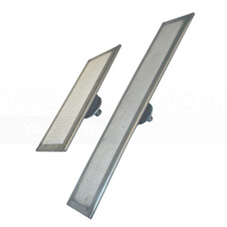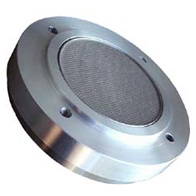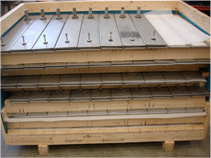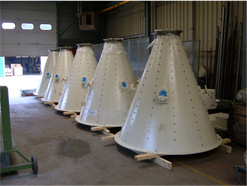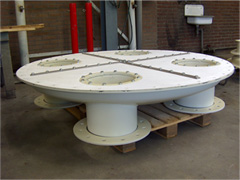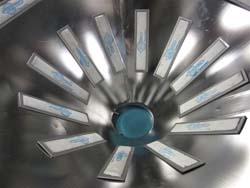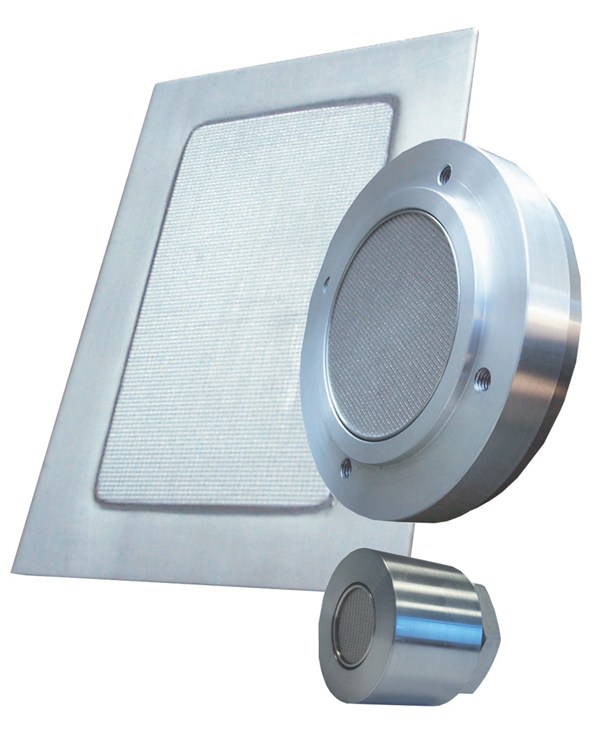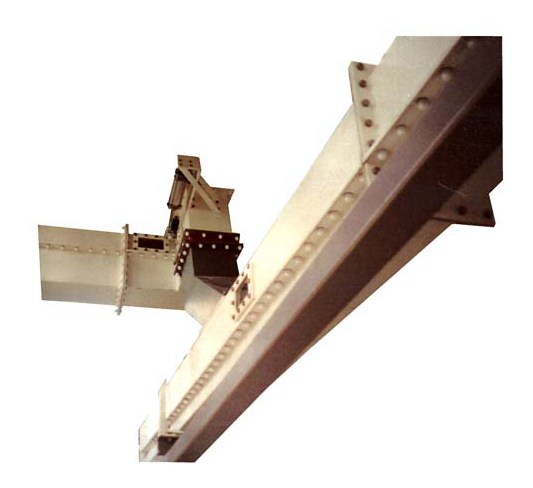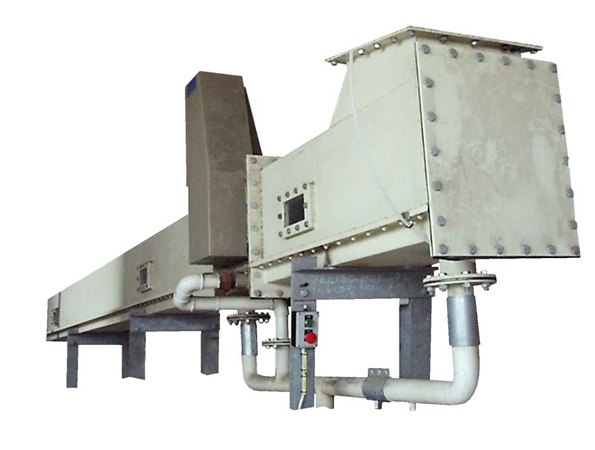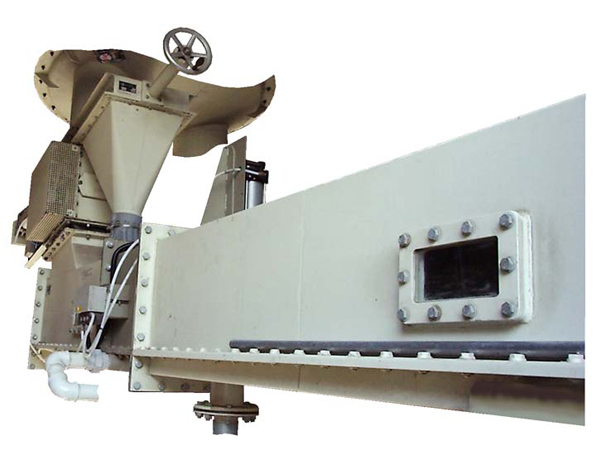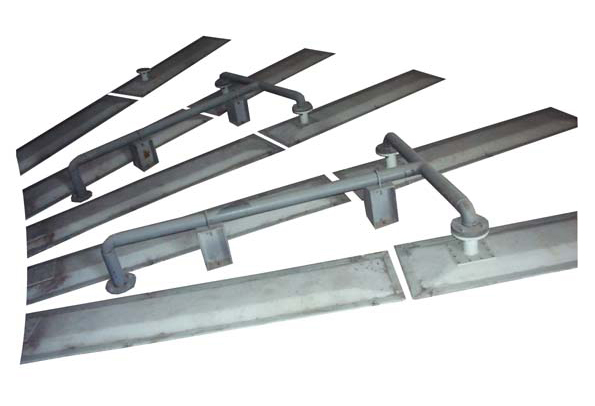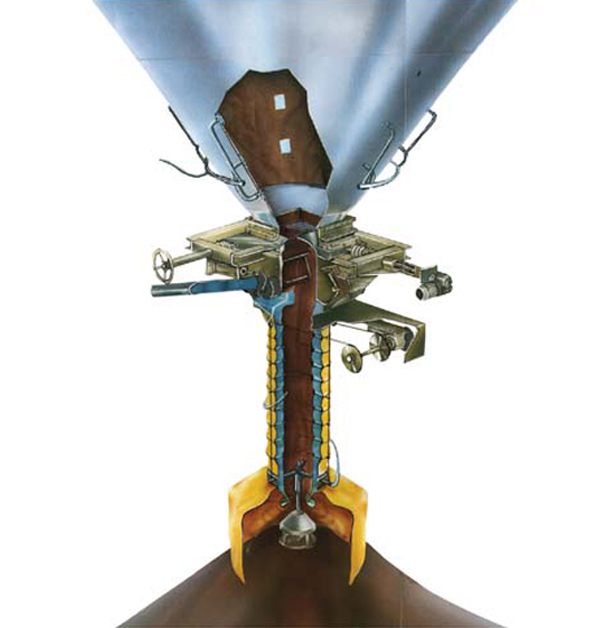Fluidisation pads
An additional disadvantage of the ‘bridge’ formation is that it could damage the rest of the circuit.The answer to this problem is simple: fluidisation pads.
By applying the fluidisation pads into the sides of the silo, the pads can aerate the silo. This aeration prevents cohesion of the particles from the material inside the silo. The cohesion of the particles causes the bridge formation to begin. Thanks to the aeration of the fluidisation pads, bridge building can be prevented and the content of the silo can flow down smoothly.
By drilling a hole in the silo wall, a fluidisation pad can be placed inside the silo. In highly stressed structures, it is sometimes necessary to weld a reinforcing ring round the hole.Once the fluidisation pad is placed inside the silo, it is attached with a seal, a washer and a nut. The final step in the installation process is connecting the fluidisation pad to a closed-circuit line, which provides air to the fluidisation pad.
Flow calculation, testing and engineering
When considering applying fluidisation pads to increase the efficiency of your operation it is important that you have a supplier that is able to calculate, test and engineer the ideal setup for your process. Veenstra has been a pioneer in the application of fluidisation techniques and has fast knowledge and testing capabilities that allows us to to pinpoint the ideal distrubution of pads across your silo. Consider asking us for a detailed quotation and we will respond with a tailored mockup of our pads applied to your application (see picture on the right) as well as a detailed quotation.
Besides fluidisation in the form of pads we also design and manufacture fluidised beds that can replace the bottom of a silo, allowing for 100% fluidisation efficience across the entire span of your silo. Furthermore, fluidisation can be applied in order to transport your product by using airslide systems. For more information on airslides please visit this page.
